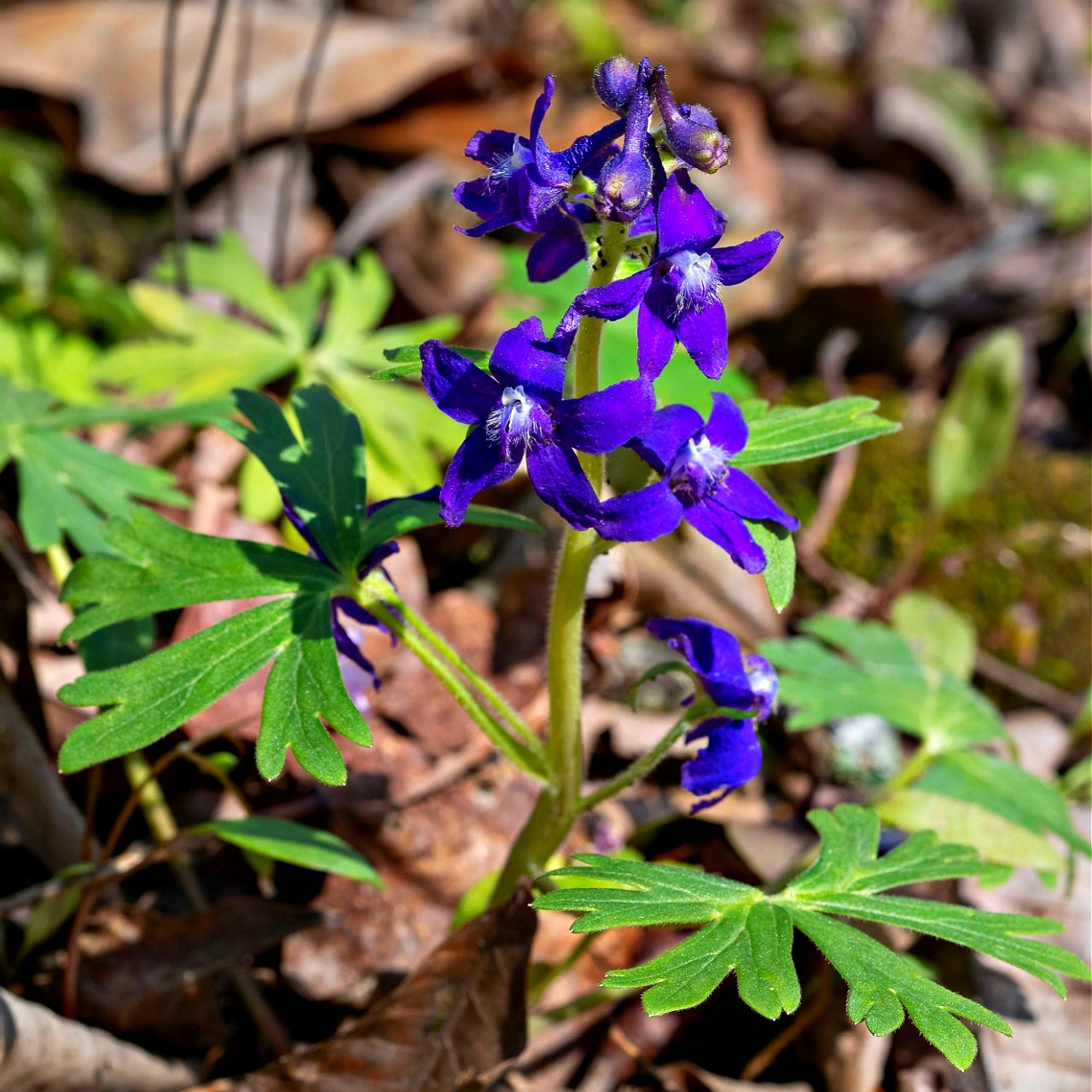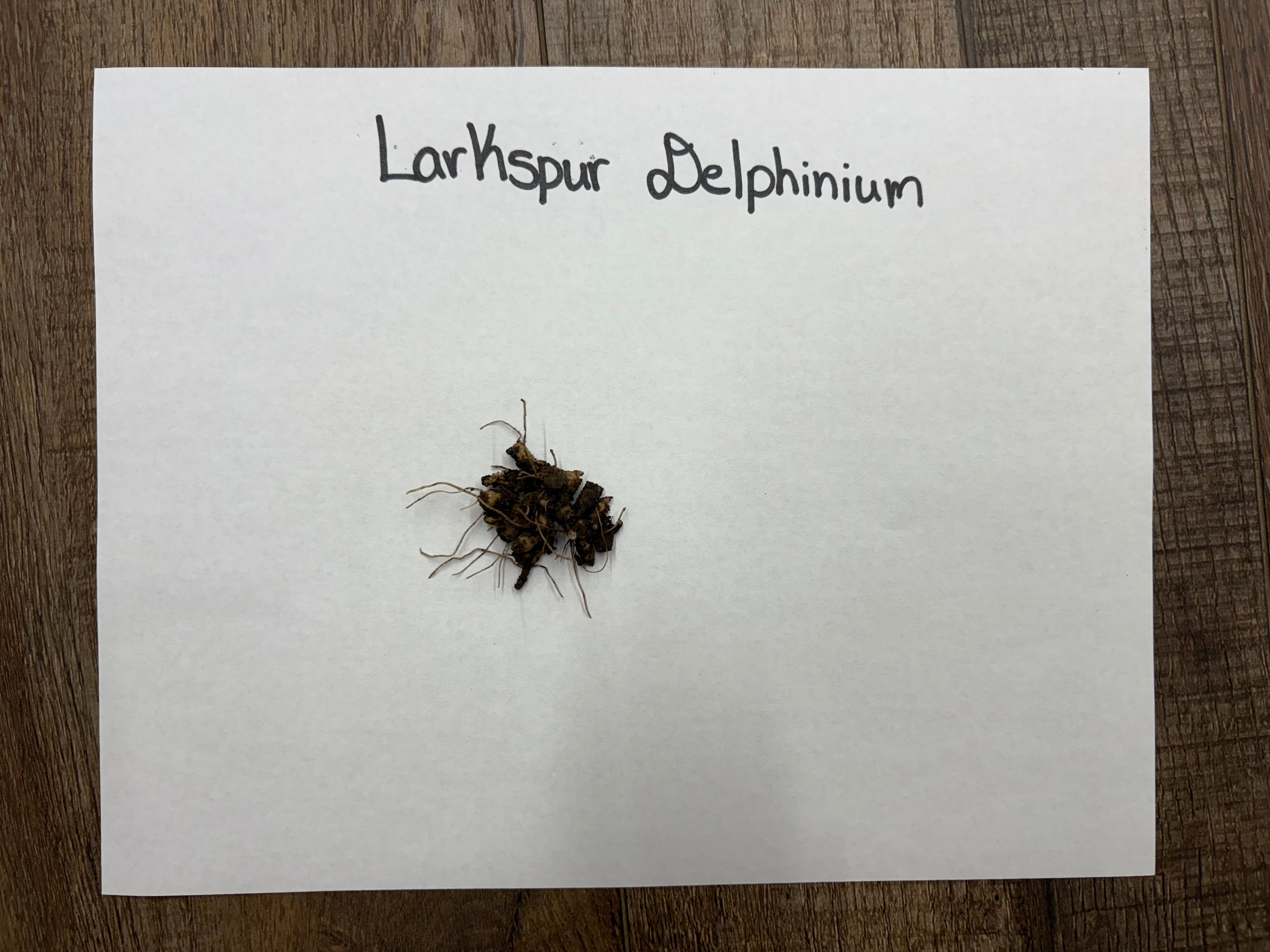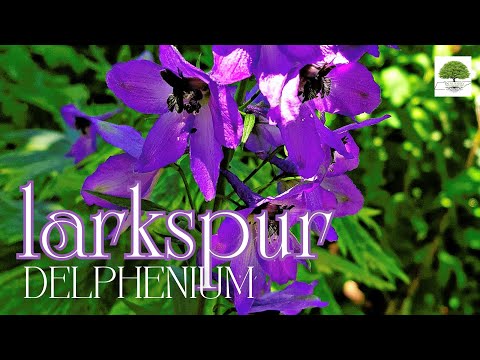Larkspur Delphinium Plant for Sale
Larkspur Delphinium (Delphinium carolinianum) perennial is an herbaceous perennial native to central and eastern North America. When in bloom, it can decorate whole prairies with its slender flowers, which sit in a cluster atop a tall, elegant, unbranched fuzzy stem. When planted in your garden, it is a delightful addition to any border environment.
The blooms perform excellently as cut flowers and can be used in your interior floral displays or as a bouquet to a loved one. The blooms of this plant are long-lasting and continue to add vibrant, multicolored focal points throughout their growth season. No bloom goes unnoticed, and these attractive Larkspur flowers entice butterflies, pollinators, and busy hummingbirds to your gardenscape.
Larkspur Delphinium Plant Details
Family: Ranunculaceae
Hardiness Zones: 4 to 7
Light Requirement: Full sun to partial shade
Water Needs: Low to moderate
Height: 1 to 4 ft
Spread: 12 to 18 in
Growth Rate: Moderate
Bloom Time: April to June
Flower Color: Various - Blue-violet, pale blue, or white
Wildlife Value: Attracts bees and butterflies
This plant is winter hardy. During the cooler months, the larkspur plant is reduced to a rosette of leaves draped across the ground. However, this rosette recedes before the larkspur flower blooms in the spring. Full sun to partial shade is most appropriate for these beautiful, tall flowers. While they can tolerate many different soil types, they do best in dry to moderate, humus-rich, fertile soils.
The plant gets its name from the Greek word for dolphin, "delphis", which is a reference to the shape of the flower bud. Interestingly, the seeds of this plant are medicinal and have been used to cure head lice when soaked in alcohol. However, they are toxic if ingested, so be wary!
Landscape Uses and Care
This plant's height is about 4 ft; it makes a great backdrop for a floral garden bed in full sun. Plant these flowers along with other native wildflowers to attract many pollinators to your garden. They are reliable bloomers year on year.
Why Choose Larkspur Plant
Attractive to pollinators, winter hardy, great for bouquets. With their tall and slender flower stems terminating in a burst of colorful blooms, these flowers bring elegance and delicacy to any home garden. Shop for Larkspur Delphiniums online at TN Nursery. For 68 years, we have served the landscaping industry and homeowners with specimen plants.
Exposure
Larkspur (Delphinium) thrives in full sun to partial shade. Provide at least 6 hours of direct sunlight daily for optimal growth and flowering. Some afternoon shade can also help shield the plant from excessive heat in hotter climates.
Height at Maturity
Over 12"
Usage
Shade Plant
Shipped As
Bare-root
Ships
USPS
Planting Zones
3-9




